

Awesome! A terribly overused word, but after putting a pair of Seven Marine 627hp engines through their paces, it’s hard to think of another superlative to adequately describe the world’s most powerful outboards.
In the current horsepower race between outboard engine manufacturers, the US’ Seven Marine leads the pack by a full length. Seven Marine’s three supercharged V8 models span a horsepower range of between 527hp and 627hp, eclipsing other high horsepower production outboards by at least 100hp.
These are built around highly-developed, marinised versions of General Motors’ fourth generation (Gen-IV) 6.2-litre, small block V8, mounted horizontally, which in automotive guise powers a range of GM vehicles, including the iconic Corvette. For New Zealand readers, versions of this engine are probably best known from Holden Special Vehicles’ (HSV) high-performance models. Sadly, Holden Australia stopped manufacturing cars in 2017.
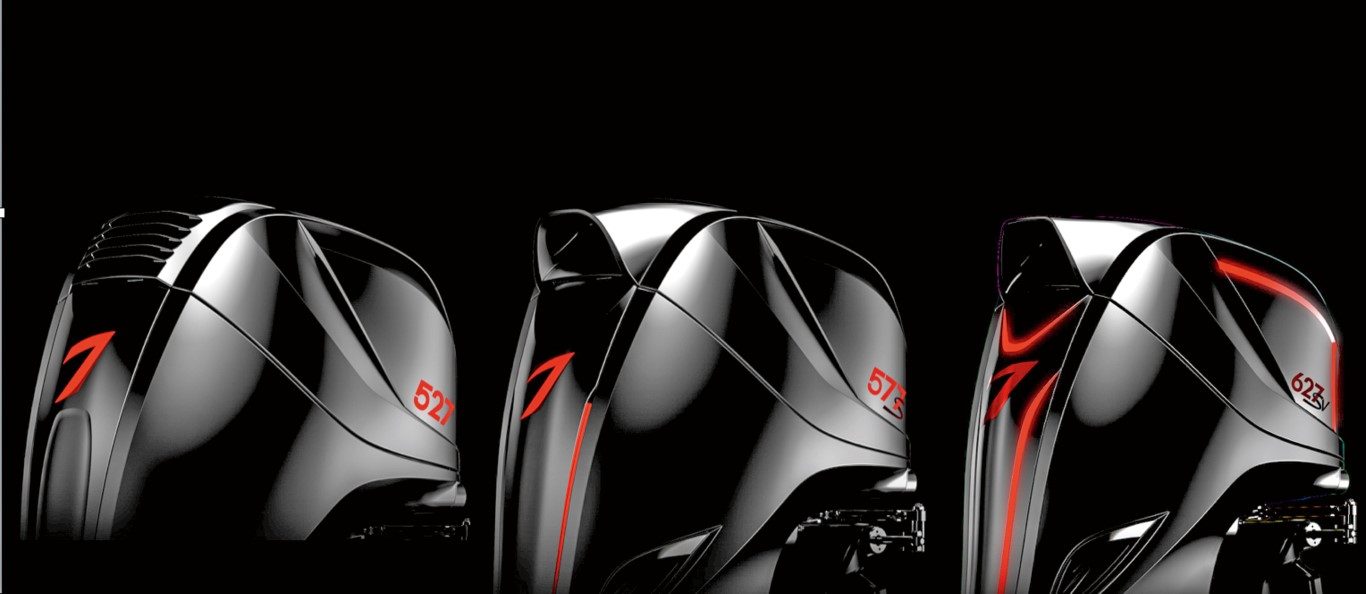
In New Zealand, Power and Marine Ltd is the distributor and service agent for Seven Marine. The company also looks after Honda outboards.
The first two Seven Marine engines in this country, both halo 627hp models, recently arrived in Auckland where they were fitted to a customer’s 35-foot Everglades 350CC (centre-console) sportfishing boat. They replaced three 350hp V8 Yamahas on the boat’s transom.
Power and Marine technicians are currently installing another pair of Seven Marine 627S outboards to a second boat, also a large American sportfisher.
Seven Marine, headquartered in Germantown, Wisconsin, was founded in 2010 by Rick Davis and his sons Brian and Eric. Rick’s background included 43 years of technology and engineering management in the marine market, including senior roles in engine development and advanced engineering for Mercury Marine.
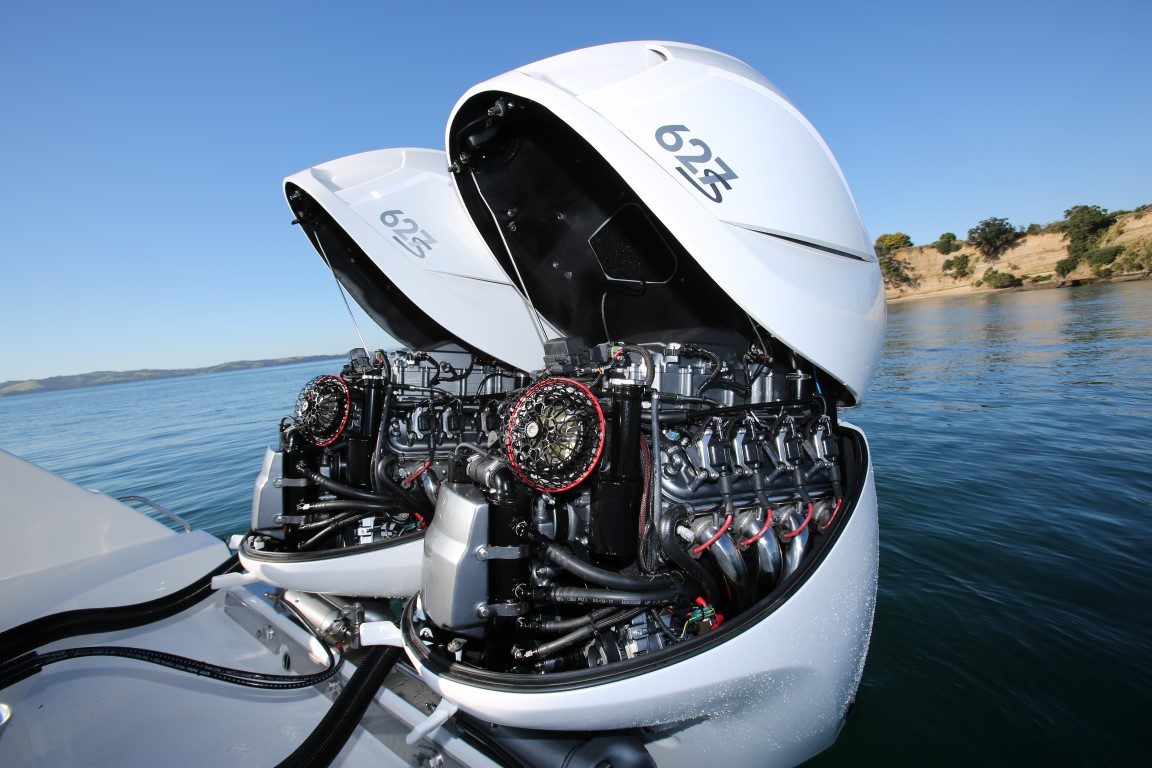
The 627S puts out an astonishing 813Nm of torque, transmitting this to the propeller via a ZF transmission featuring precision-ground 90o spiral-bevel gears, inboard-style wet disc clutches, integrated trolling functionality and smooth, progressive shifting.
The gearcase is a twin-pinion design that minimises frontal area for less drag and divides torque across two drive gears for durability, high-speed cruise economy and stonking mid-range acceleration. Three gearcases are available, including the high-performance GT gearcase and the high-thrust CR gearcase with contra-rotating propellers. The engines on the Everglades 350CC have standard gearcases with counter-rotating, five-bladed Mercury Maximus 15 5/8-inch by 26-inch propellers.
Michael Roberts, the only person in New Zealand currently qualified to operate the vessel, underwent comprehensive training with the Seven Marine team sent to New Zealand to provide installation, engineering and marketing support, as well as training in engine operation and servicing.
Bolting the engines to the Everglades 350CC’s transom went according to plan, said Honda Marine’s Guy Oglesby, who looks after technical support.
“With the Seven Marine team on hand to help out with technical questions, we simply followed the factory’s installation guidelines,” he says.
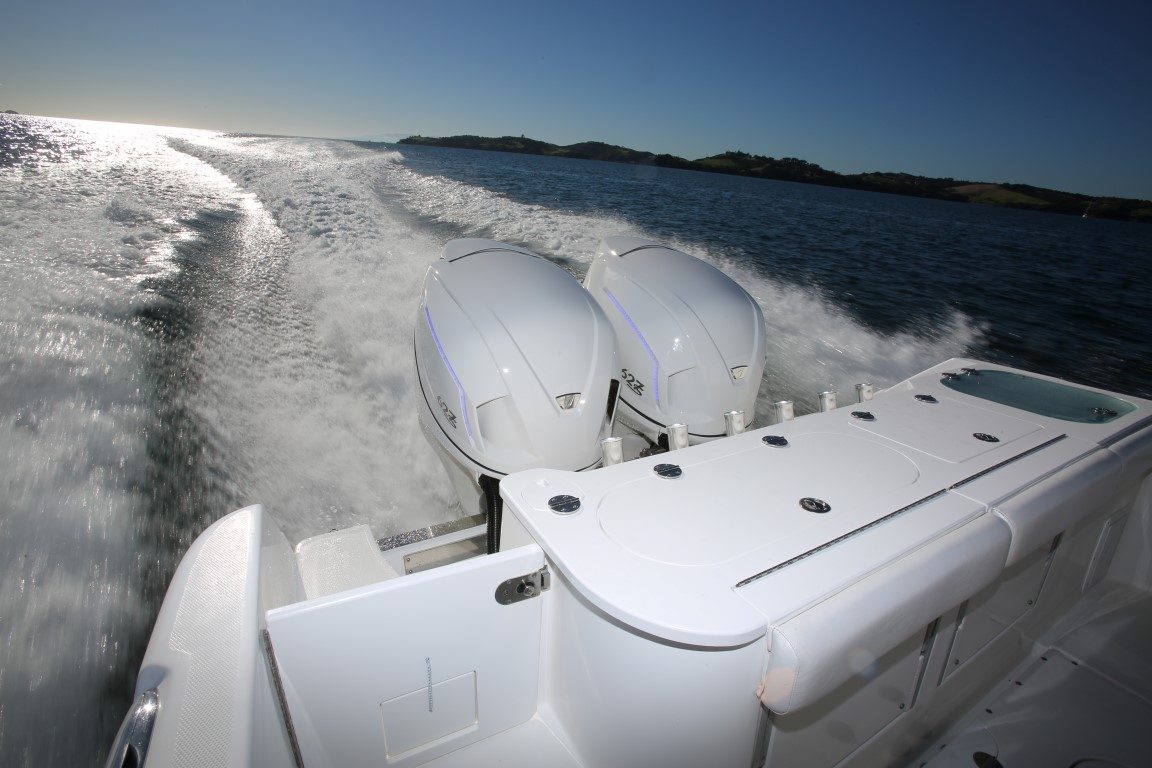
The Everglades hull and transom were easily strong enough to handle the extra horsepower and torque – a pair of Seven Marine outboards weighs considerably less than three Yamaha V8s – so no structural changes were required. The only modifications were to the transom where the original aluminium backing plates for the engine brackets were replaced with stronger stainless-steel versions.
However, installation wasn’t as simple as just bolting the engines on, hooking up the fuel lines and connecting cables. Quite a bit of engineering was required. The engines are supplied with a separate hydraulic steering pump and engine trim pumps. On the Everglades, the pumps are neatly installed in a large storage locker under the cockpit sole, the hydraulic hoses exiting the transom through holes especially cut for the purpose.
The engines are mounted on the Everglades’ transom at 32-inch centres, as per Seven Marine’s recommendations, the centres determined by the hull type and its deadrise at the transom. On the Everglades, this places them very close together, but while they are just a few centimetres apart in the straight-ahead position and even closer when turning, the cowls never touch, even at full lock.
Engine cowls are perfectly colour-matched to the vessel’s hull. Seven Marine customers can design their own colour scheme from an extensive online palette, or the company can match a paint sample.
As part of a general overhaul prior to fitting the new engines, the Everglades was repainted using Awlgrip paint products, a sample of which was sent to Seven Marine’s Wisconsin facility for matching. LED lights integrated into the cowlings are certainly eye-catching. A remote control allows you to cycle through a range of colours and flashing routines.
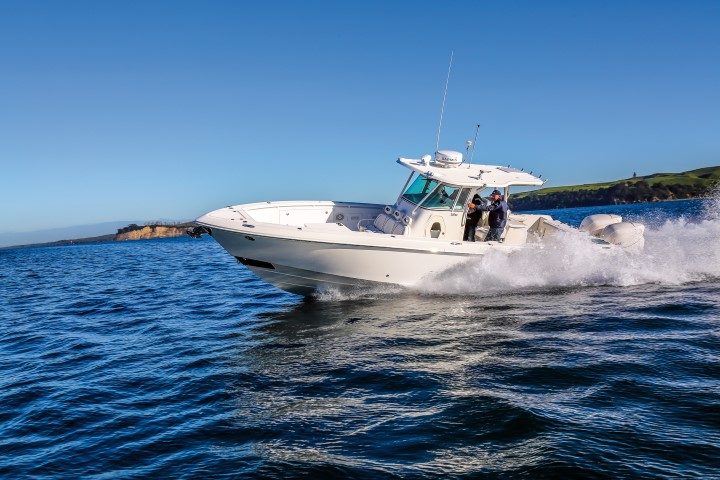
We joined the boat for a test run on the Waitemata Harbour, in company with Honda Marine technicians who were gathering some benchmark speed and fuel-flow data. We spent about three hours on the water putting the engines through their paces.
There is quite a long run down the Tamaki River to the open sea, most of it at five knots. Fortunately, the ZF controls modulate the amount of clutch slip, which allows the vessel to trickle along at five knots with the engines idling in gear. Without slip it would be much faster.
My initial impressions included smoothness and quiet running, but even at idle – and especially at start-up – there is a distinctive V8 burble. The cadence of the V8 exhaust note became more urgent as the revs rose, but noise levels are nicely controlled. At higher speeds the whine of the superchargers adds a distinctive soprano note to the throaty bark of the engines’ tubular stainless-steel exhausts.
It’s difficult to adequately describe the overwhelming sensation of power that results from opening the throttles, but we quickly learned to heed Michael’s instructions to hold on tight!
Acceleration is awe-inspiring, but it’s the accompanying soundtrack from two sets of dual exhausts, overlaid by the high-pitched whine of the superchargers, that is truly out of this world! At full noise the engines sound like a supersonic jetliner taking off.
At the same time, the outboards never feel harsh, vibration is non-existent, and thanks to the supercharger, the power delivery is linear – it’s like turning on a tap.
ZF electronic throttles provide swift response, and the engines can be operated individually or both together using two levers, or with engines synced using one lever to control both. The outboards offer a wide trim range and Michael used most of it during our demonstration. At higher speeds, the engines need to be trimmed well out and small engine trim adjustments make a big difference to speed and economy. Trim tabs were also used.
Fortunately, outboard trim settings, along with a vast range of engine data, fuel-burn figures, range and much more, are prominently displayed on the TEC7 multi-function touch-screen display – Michael says he is still learning the menu. The default display is configured so that all the most important data is easy to see, but users can customise the display. The engines are stopped and started from virtual buttons on the screen.
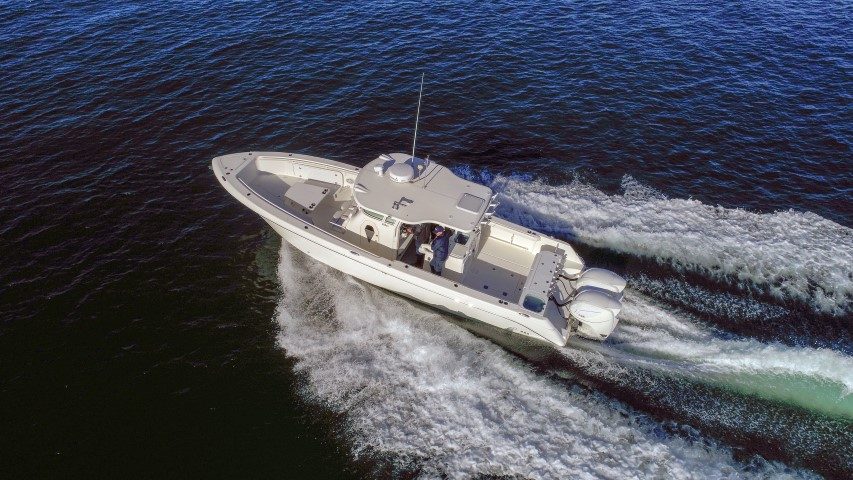
With outboards of this size, fuel economy is probably moot, but decent figures are achievable. At 30 knots each engine was burning 60 litres an hour, rising to 220 litres per hour at 40 knots. The Everglades carries 1,500 litres of fuel and the tank was three-quarters full on demo day.
On one two-hour trip during the engines’ run-in period the boat travelled from Westhaven to Matiaitia, Waiheke Island, on to Bon Accord Harbour, Kawau Island, down the coast to Mahurangi Harbour and then back to Westhaven. Total fuel burn was 400 litres.
As expected, performance was spectacular: this rig is quite capable of making fast, comfortable passages in most conditions. The Everglades is a big, heavy vessel, but we saw a top speed of 57 knots at the 5,500rpm redline. The rev limiters cut in if the revolutions climb too high and the computer automatically shuts down the engine if it is accidentally trimmed up too far, as we discovered while trying to eke out an extra half-knot.
At a fast cruising speed of 40 knots, the ride was comfortable and noise levels were relatively muted. Indeed, it was hard to credit how fast you were travelling. At 50 knots-plus, the rush of wind was the main indicator of speed, along with the turbine-like howl of the engines.
And what a glorious sound it is!
Specifications
type supercharged, intercooled 6.2L GM Gen IV small block, 90° V8
displacement 6,162cc (376ci)
weight 497kg
horsepower 627hp (at propeller)
torque 813Nm
bore x stroke 103.25 x 92mm
fuel system sequential fuel injection
alternator 180 amps 12V (120A @ 1,000rpm)
transmission ZF electronically-controlled
gearcase twin pinion
exhaust system stainless steel twin-walled tubular headers
cooling system closed-loop heat exchanged with
twin-impeller gear-driven pumps
warranty three years (500 hours per year for three years)
fuel consumption who cares?




